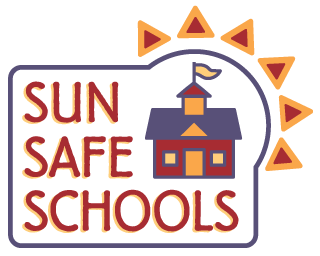This was a very productive year for Klein Buendel (KB). In 2018, our scientists and staff:
- Competed successfully for 4 new prime grant and subcontract research awards;
- Completed 7 prime and subcontract research projects;
- Presented research findings at 17 local, national, and international conferences and expert meetings; a total of 34 presentations, panel discussions, and posters; and
- Published 20 research manuscripts in peer-reviewed journals.
It was also a very exciting year because KB was one of three North American sponsors and organizers of the 4th International Conference on UV and Skin Cancer Prevention. KB co-sponsored the conference with Ryerson University in Toronto, Ontario, Canada and the Canadian Dermatology Society. The conference was held in Toronto on May 1-4, 2018.
And KB celebrated it’s Sweet 16th Birthday in June!
Additional highlights of our 2018 research publications, conference presentations, and outreach activities are listed below. Publications may include manuscripts that were in press or published in electronic format last year. The names of KB investigators and staff are bolded.
Publications
Loeb SJ, Penrod J, Myers VH, Baney BL, Strickfaden SM, Kitt-Lewis E, Wion RK. Enhancing Care of Aged and Dying Prisoners: Is e-Learning a Feasible Approach? J Forensic Nurs. 2017 Dec;13(4):178-185.
Cochrane SK, Chen SH, Fitzgerald JD, Dodson JA, Fielding RA, King AC, McDermott MM, Manini TM, Marsh AP, Newman AB, Pahor M, Tudor-Locke C, Ambrosius WT, Buford TW; LIFE Study Research Group. Association of Accelerometry-Measured Physical Activity and Cardiovascular Events in Mobility-Limited Older Adults: The LIFE (Lifestyle Interventions and Independence for Elders) Study. J Am Heart Assoc. 2017 Dec 2;6(12).
Wang-Schweig M, Miller BA, Buller DB, Byrnes HF, Bourdeau B, Rogers V. Using panel vendors for recruitment into a web-based family prevention program: methodological consideration. Evaluation and the Health Professions. 2017 Jan 1: 163278717742189. doi: 10.1177/0163278717742189. [Epub ahead of print]
Berteletti J, Buller DB, Massie K, Ashley J, Liu X, & Reynolds, KR. Sun protection policies in public school districts with elementary schools in California. JAMA Dermatol. 2018 Jan 1;154(1):103-105.
Buller DB, Reynolds KD, Berteletti J, Massie K, Ashley J, Buller MK, Meenan RT. Accuracy of principal and teacher knowledge of school district policies on sun protection in California elementary schools. Prev Chronic Dis. 2018 Jan 18;15:E07. doi: 10.5888/pcd15.170342.
Gellar AC, Jablonski NG, Pagoto SL, Hay JL, Hillhouse J, Buller DB, Kenney L, Robinson JK, Weller RB, Moreno MA, Gilchrest BA, Sinclair C, Arndt J, Taber JM, Morris KL, Dwyer LA, Perna FM, Klein WMP, Suls J. Interdisciplinary perspectives on sun safety. JAMA Derm. 2018; 154(1):88-92.
Buller DB, Heckman CJ, Manne SL. The potential of behavioral counseling to prevent skin cancer. JAMA Dermatol. 2018 May;154(5):516-521.
Buller DB, Walkosz BJ, Buller MK, Wallis A, Andersen PA, Scott MD, Eye R, Liu X, & Cutter GR. Results of a randomized trial on an intervention promoting adoption of occupational sun protection policies. Am J of Health Promot. 2018 May;32(4):1042-1053.
Hay JL, Zielaskowski K, White KM, Kaphingst K, Robers E, Guest D, Sussman A, Talamantes Y, Schwartz M, Rodriguez VM, Li Y, Schofield E, Bigney J, Hunley K, Buller D, Berwick M. Interest and uptake of MC1R testing for melanoma risk in a diverse primary care population: a randomized clinical trial. JAMA Dermatol. 2018 Jun 1;154(6):684-693.
Walkosz BJ, Buller D, Buller M, Wallis A, Meenan R, Cutter G, Anderson P, Scott M. Sun Safe Workplaces: effects of an occupational skin cancer prevention program in employee sun safety practices. J Occup Environ Med. 2018 Nov;60(11):900-997.
Buller DB, Woodall WG, Saltz R, Grayson A, Buller MK. Implementation and Effectiveness of an Online Responsible Vendor Training for Recreational Marijuana Stores in Colorado, Oregon, and Washington State. J Public Health Manag Pract. 2018 Aug 31. [Epub ahead of print]
Nostrati A, Pimentel MA, Falzone A, Hegde R, Goel S, Chren M, Eye R, Linos E, Pagoto S, Walkosz BJ. Skin cancer prevention messages on Facebook: likes, shares and comments. J Am Acad Dermatol. 2018 Sep;79(3):582-585.
Kasting ML, Christy SM, Sutton SK, Lake P, Malo TL, Roetzheim RG, Schechtman T, Zimet GD, Walkosz BJ, Salmon D, Kahn JA, Giuliano AR, Vadaparampil ST. Florida Physicians’ Reported use of AFIX-Based Strategies for Human Papillomavirus Vaccination. Prev Med. 2018 Sep 13. pii: S0091-7435(18)30282-2. doi: 10.1016/j.ypmed.2018.09.004. [Epub ahead of print]
Buller MK, Andersen P, Bettinghaus EP, Liu X, Slater MD, Henry K, Fluharty L, Fullmer S, Buller DB. Randomized Trial Evaluating Targeted Photographic Health Communication Messages in Three Stigmatized Populations: Physically-disabled, Senior, and Overweight/Obese Individuals. Journal of Health Communication. 2018;23(10-11):886-898.
Woodall WG, Starling R, Saltz RF, Buller DB, Stanghetta P. Results of a randomized trial of web-based retail onsite responsible beverage service training: Waytoserve.org. Journal of Studies on Alcohol and Drugs. 2018 Sept;79(5):672-679.
Woodall WG, Starling R, Saltz RF, Buller DB, Stanghetta P. Responses to Commentaries by Miller (2018) and Buvik and Rossow (2018). J Stud Alcohol Drugs. 2018 Sep;79(5):684-685.
Buller DB, Walkosz BJ, Buller MK, Wallis A, Andersen PA, Scott MD, Meenan RT, Cutter GR. Implementation of occupational sun safety at a two-year follow-up in a randomized trial: comparison of sun safe workplaces policy intervention to attention control. American Journal of Health Promotion. 2018 Nov 26:890117118814398. doi: 10.1177/0890117118814398. [Epub ahead of print]
Kitt-Lewis E, Loeb SJ, Myers VH, Wion RK, Baney B, Strickfaden S. Developing training to enhance care of aged and dying inmates: set-up phase. Public Health Nursing. In press.
Byrnes HF, Miller BA, Grube JW, Bourdeau B, Buller DB, Wang-Schweig M, Woodall WG. Prevention of alcohol use in older teens: A randomized trial of an online family prevention program. Psychology of Addictive Behaviors. In press.
Buller MK, Bettinghaus EP, Fluharty L, Andersen PA, Slater MD, Henry KL, Liu X, Fullmer S, Buller DB. Improving health communication with photographic images that increase identification in three minority populations. Health Ed Res. In press.
Conference Presentations
NASPA Well-being and Health Promotion Leadership Conference — January 18-20 in Portland, Oregon
• Myers VH, Newton RL, Jerrod T. Healthy Detours: A location-based services app to promote healthy choices among college students. (presentation)
University of Alabama Birmingham School of Medicine Center for Exercise Medicine’s Distinguished Lecture Series — March 13 in Birmingham, Alabama
• Myers V. Caminemos Juntas: A Location-Based Smartphone App for Latinas to Connect with Nearby Walking Partners. (presentation)
Eastern Nursing Research Society Annual Meeting — April 11-13 in Newark, New Jersey
• Loeb SJ, Kitt-Lewis E, Myers VH. Development of Computer-based Training for Inmate Caregivers through Nursing Science and Technological Innovations. (presentation)
Society of Behavioral Medicine Annual Meeting — April 11-14 in New Orleans, Louisiana
• Berteletti J, Strickfaden S, Woodall WG, Starling R, Zimet G, Stupiansky N, Chilton L. BeVaccinated: Designing a web app to promote teen vaccination uptake. (poster)
• Buller D, Walkosz B, Buller MK, Wallis A, Meenan R, Liu X. Moderators of implementation of occupational sun protection policy by public-sector employers in a randomized trial. (presentation)
• Goldstein C, Alshurafa N, Spruijt-Metz D, Thomas G, Jake Schoffman D, Goldstein S, Wac K, Myers V. The Digital Health Council & ETCD present perspectives on effective digital health training in behavioral medicine. (panel discussion)
• Jackson J, Castro Sweet C, Coa K, Foster G, Matacotta J, Myers V, Place S, Keefe B, Osborn C, Wolin K. Speed networking your career options: Non-academic paths for behavior scientists. (panel discussion)
• McLeod D, Myers V, Stetson B, Sheean P. Nuts and Bolts: A practical Q&A about your education and career trajectory. (panel discussion)
• Myers V, Loeb SJ, Kitt-Lewis E, Jerrod T, Strickfaden S, Wion RK. What works in corrections: Front-line insights on computer-based training. (poster)
• Myers VH, Hudson H, Jerrod T, Strickfaden S, Buller M, Lippert M. Pinpoint: Gaming technology to engage adolescent sickle cell patients in precision pain management. (poster)
• Pagoto S, Berteletti J, Walkosz B, Oleski J, Palumbo A, Baker K, Hillhouse J, Henry K, Buller D. Delivering health promotion interventions on social media: Engagement and methodological considerations. (panel discussion)
• Reynolds K, Buller D, Berteletti J, Massie K, Ashley J, Buller MK, Meenan R. Correlates of sun safe policy implementation among elementary schools. (poster)
• Newton RL, Myers V, Carter L, Griffith D. A Mobile Phone-based physical activity maintenance app for African American men: MobileMen. (presentation)
Patient Centered Outcomes Research 8th Annual Symposium – April 24-25 2018 in St. Louis, Missouri
• Buller DB. Precision Skin Cancer Prevention: A Sun Safety Mobile App. (presentation)
4th International Conference on UV and Skin Cancer Prevention – May 1-4, 2018 in Toronto, Ontario, Canada
• Buller D. A Facebook Intervention to Reduce mothers’ Permissiveness for Indoor Tanning: Health Chat. (presentation)
• Meenan RT, Buller DB, Reynolds KD, Massie K, Berteletti J, Buller MK, Ashley J. Costs of Sun Protection Policy Implementation in California School Districts. (presentation)
• Meenan R, Buller D, Walkosz B, Eye R, Buller M, Wallis A. Estimated Cost of Occupational Sun Protection Policy Intervention Delivery to Public-Sector Employers. (presentation)
• Massie K, Berteletti J, Freeth B, Ashley J, Buller MK, Buller DB, Reynolds KD. Implementation Strategies: Review of a Sun Safety Program in California. (poster)
• Walkosz B, Dellavalle R, Buller M, Buller D, Eye R, Olivas S. Formative Research to Develop Sun Safety Ink!, a Skin Cancer Prevention Training Program for Tattoo Artists. (presentation)
International Communication Association Annual Meeting — May 24-28 in Prague, Czech Republic
• Woodall WG, Berteletti J, Starling R, Zimet G, Stupainsky N, Kong A, Chilton L. Usability testing of a web app to improve adolescent vaccination: Be Vaccinated. (presentation)
• Walkosz B, Buller D, Buller MK, Wallis A, Meenan R, Scott M, Andersen P, Cutter G. Sun Safe Workplaces: Effect of a communication theory-based occupational skin cancer prevention program on employee sun safety practices. (presentation)
UNESCO International Conference on the Tangible and Intangible Impact of Information and Communication in the Digital Age — June 4-8 in Khanty-Mansiysk, Russia
• Walkosz B. Emerging Issues in Media Literacy in the 21st Century. (presentation)
National Cancer Institute Cancer Center HPV Vaccination Meeting – June 7-8 in Washington, DC
• Kong A, Woodall WG, Zimet G, Reither J, Myers V, Buller D, Starling R, Chilton L, Ginossar T. Improving HPV Vaccine Uptake with Digital Interventions. (presentation)
National Research Society on Alcoholism Annual Scientific Meeting – June 16-20 in San Diego, California
• Sanchez V, Chacon A, Perez F, Reither J. WayToServe-Español: Adapting an Evidence-Based Online Responsible Beverage Server (RBS) Training for Spanish Language Populations in the US Southwest. (poster)
National Cancer Institute Exercise Science and Skin Cancer Prevention Research Meeting — September 26-27 in Washington, DC
• Buller D, Walkosz B. Translational Research in Sun Safety in Sports Settings. (presentation)
National Commission on Correctional Health Care Conference – October 12-16 in Fort Lauderdale, Florida
• Loeb S, Myers V, Kitt-Lewis E. Developing and Testing E-Training to Enhance Care of Aged and Dying Prisoners. (poster)
EUSPR Conference and Members’ Meeting – October 24-29 in Lisbon, Portugal
• Miller BA, Rogers V, Byrnes H, Johnson M, Buller DB, Grube J, Berteletti J. Influences of Personal Characteristics on Group-based Club Intervention Outcomes. (presentation)
Colorado Cancer Coalition Annual Symposium — November 8-9 in Lakewood, Colorado
• Myers V. Caminemos Juntas: Using Technology and Social Media to Advance Your Mission. (presentation)
American Public Health Association Annual Meeting — November 10-14 in San Diego, California
• Buller DB, Woodall WG, Saltz R, Grayson A, Buller MK, Svendsen S. Implementation and Effectiveness of an Online Responsible Vendor Training for Recreational Marijuana Stores in Colorado, Oregon, and Washington State. (presentation)
EUROGIN International Multidisciplinary HPV Congress – December 2-5 in Lisbon, Portugal
• Woodall WG. Digital Interventions to Improve HPV Vaccine Uptake: Results and Issues. (presentation)
• Woodall WG, Zimet G, Reither J, Kong A, Buller DB, Chilton L, Myers V, Starling R, Ginossar T. Vacteens: Results from Ongoing Trials of Mobile Web Apps to Improve HPV Vaccine Uptake. (poster)
• Buller DB, Walkosz B, Berteletti J, Pagoto S, Oleski J, Baker K. Insights on HPV Vaccination from Mothers’ Comments on Facebook Posts in a Randomized Trial. (poster)
The Science of Dissemination & Implementation in Health Annual Conference – December 3-5 in Washington, DC
• Meenan R, Reynolds K, Buller D, Massie K, Berteletti J, Buller MK, Ashley J. Economic evaluation of a sun protection promotion program in California elementary schools. (presentation)
• Loeb S, Myers V, Kitt-Lewis E, Wion RK, Jerrod T, Carter M. Developing Geriatric and End-of-Life E-training For Inmate Peer Caregivers (poster)
Other Highlights & Recognitions
In February, Dr. Valerie Myers, began her tenure as a mentor for the SPRINT program at the National Cancer Institute. She also began serving as a mentor on Dr. Seth Creasy’s K Award entitled, “Linking Temporal Pattern of Modifiable Behaviors to Weight Loss Outcomes”.
Dr. David Buller was a co-author on a chapter in a book that was selected as the 2018 recipient of the Gerald R. Miller Boo Award for Interpersonal Communication from the National Communication Association:
The book is: D.O. Braithwaite and P. Schrodt (Eds.), Engaging theories in interpersonal communication: Multiple perspectives, 2nd edition (pp. 343-356). Thousand Oaks, CA: Sage.
The chapter is: Burgoon, J. K., & Buller, D. B. (2015). Interpersonal deception theory: Purposive and interdependent behavior during deceptive interpersonal communication.
Dr. Susan Loeb and Dr. Valerie Myers’ Phase I STTR Project, E-training of Inmate Peer Caregivers for Enhancing Geriatric and End-of-Life Care in Prisons, was selected for inclusion in the NIH Niche Assessment Program for small businesses.
KB received trademark registration through the U.S. Patent and Trademark Office for Train To Tend®.
Way To Serve®, the licensed evidence-based online responsible alcohol server training program owned by KB and its research collaborators, achieved a significant milestone by selling 75,000 trainings since it entered the market.
KB, along with Rocky Mountain Sunscreen and the Colorado Skin Cancer Task Force, offered free UV camera photographs and skin cancer prevention education to attendees at the Snowsports Industries of America Snow Show in January and the Outdoor Retailer Summer Market in July. Both trade shows were held at the Colorado Convention Center in Denver, Colorado.
Beginning in September, KB made its Grade K-5 sun safety curriculum, Sunny Days Healthy Ways®, available free to the public in response to the Surgeon General’s Call to Action to Prevent Skin Cancer.
KB was recognized on Colorado Biz Magazine’s Top 100 Woman-Owned Companies list. KB landed at #48 for 2018. Colorado Biz Magazine ranked Klein Buendel #142 of Top 250 Private Companies for 2018.
Here’s to a Very Healthy and Happy New Year!





 Dr. Victoria Sánchez is an Associate Professor in the
Dr. Victoria Sánchez is an Associate Professor in the 

 Dr. Valerie Myers, KB Senior Scientist and SBM Fellow, is a co-presenter for three Panel Discussions related to training and career development at the
Dr. Valerie Myers, KB Senior Scientist and SBM Fellow, is a co-presenter for three Panel Discussions related to training and career development at the 